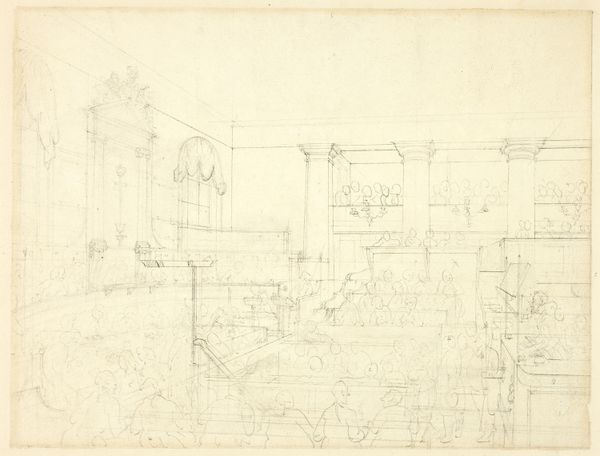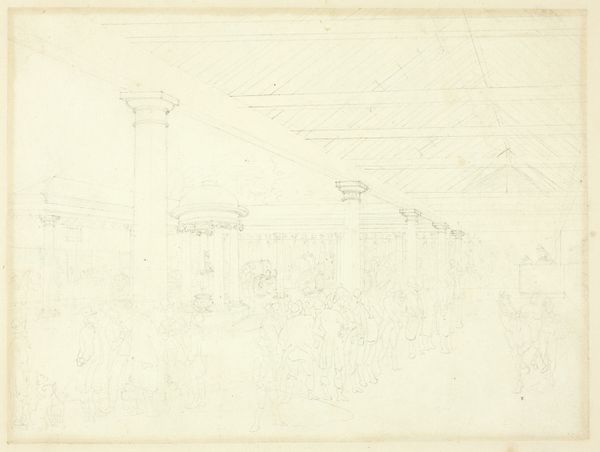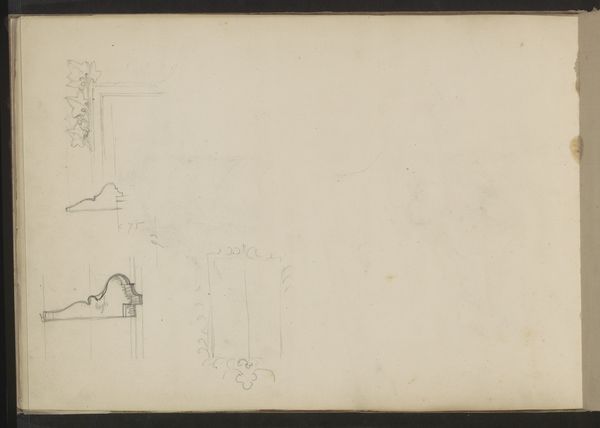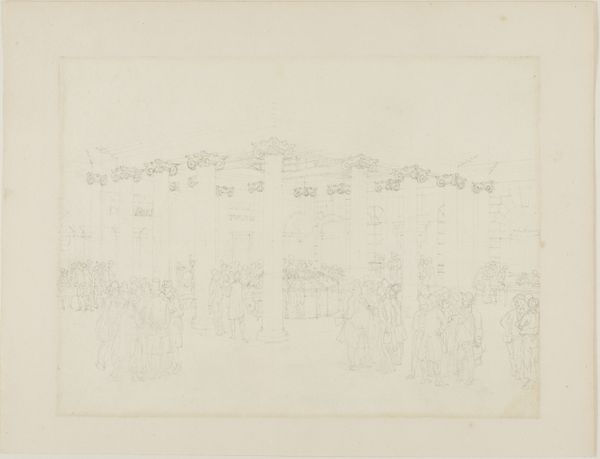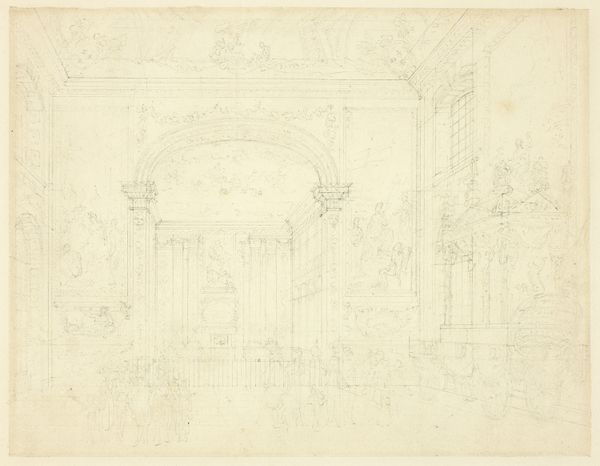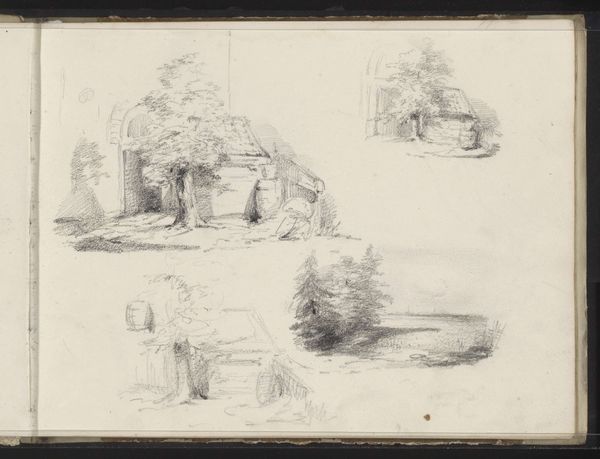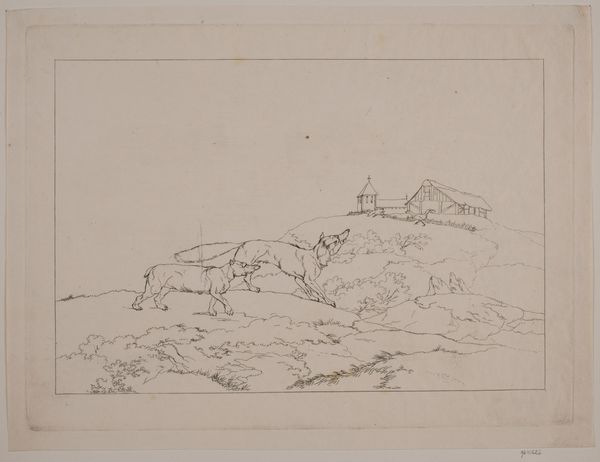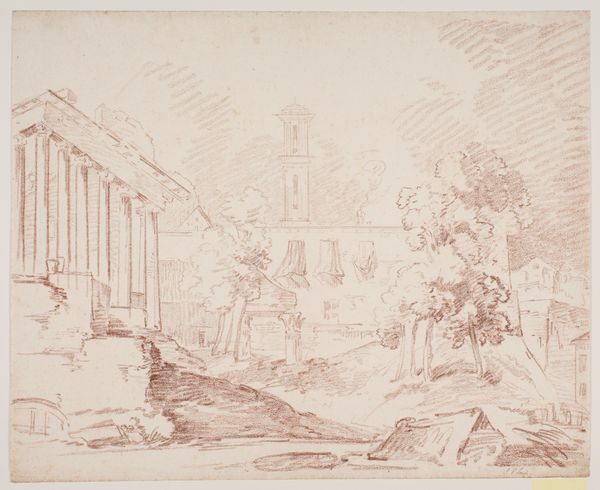
Study for Bridewell Prison, Women's Side, from Microcosm of London c. 1808
0:00
0:00
drawing, print, paper, graphite
#
drawing
# print
#
etching
#
paper
#
graphite
#
genre-painting
#
history-painting
Dimensions: 210 × 261 mm
Copyright: Public Domain
Editor: So, here we have Augustus Charles Pugin’s “Study for Bridewell Prison, Women's Side, from Microcosm of London,” made around 1808. It's graphite, etching, and print on paper and held by the Art Institute of Chicago. What strikes me is its unfinished feel and the bleak subject matter. What stands out to you? Curator: Bleak is the word, isn't it? I mean, look at the figures strewn about – bodies almost discarded. It makes you wonder, what's being 'studied' here? Is it architectural form, or perhaps the moral state of society, peering into a place where the unwanted are hidden? Maybe Pugin’s pointing a finger, asking us if this is the kind of society we truly want? Editor: That makes me think of how prisons are often designed to be out of sight, out of mind. It's like Pugin's forcing us to confront it. Do you think the "unfinished" aesthetic is part of that statement? Curator: Absolutely! It's rawness lends itself to this. It’s a glimpse, a hurried sketch – like a secret revealed before it’s been sanitised. Like unfinished business. What do you make of the light? Editor: I noticed the high windows letting in minimal light. I guess it emphasizes the imprisonment and creates a somber, hopeless atmosphere. Curator: Right! But the light is there, nonetheless, hinting at the possibility of something beyond this grim scene, isn't it? Perhaps it is Pugin’s quiet optimism sneaking in. Art doesn't have to shout; sometimes it just whispers and that makes us lean in a little closer, eh? Editor: I see what you mean, I'm definitely leaning in a little more now! The subtleties add layers to its message. Curator: Indeed! It is a powerful reminder that even in the darkest corners, art can illuminate truths. It may be an unfinished study, but its message resounds clear.
Comments
No comments
Be the first to comment and join the conversation on the ultimate creative platform.


